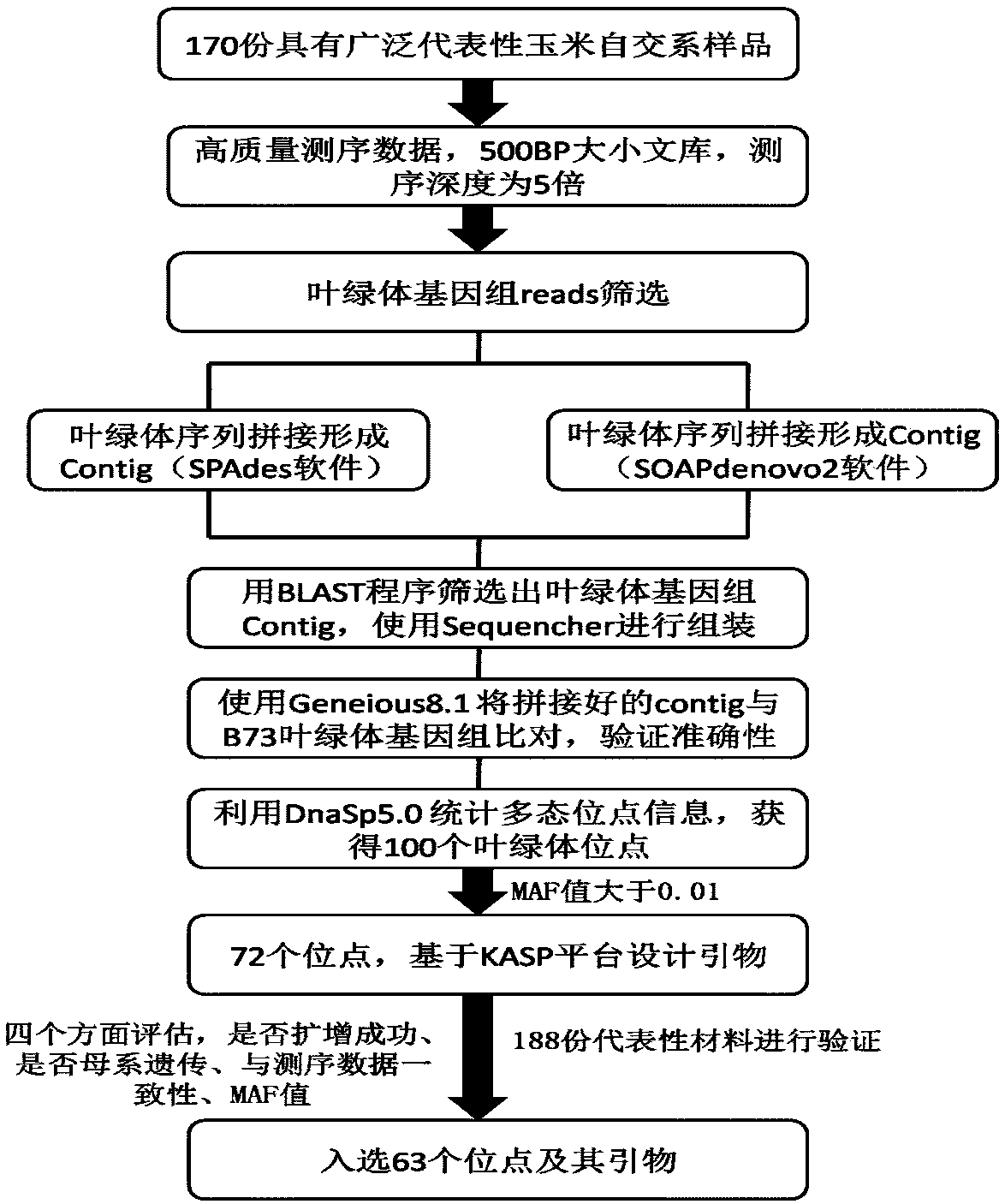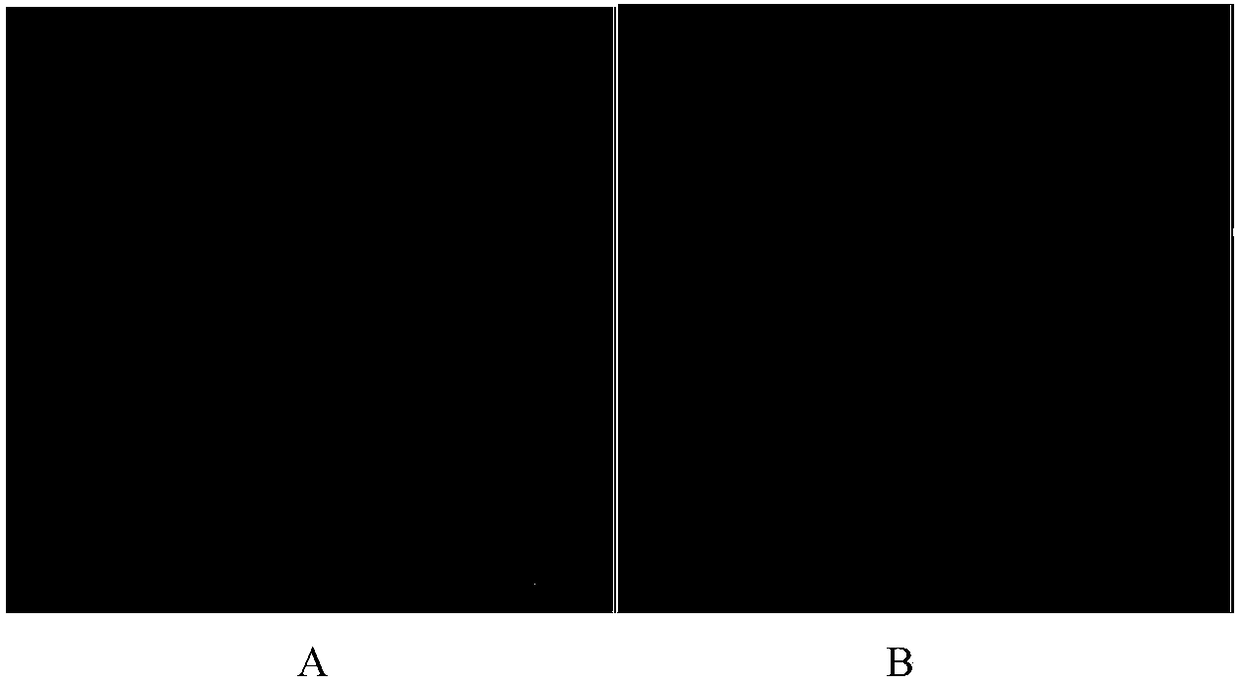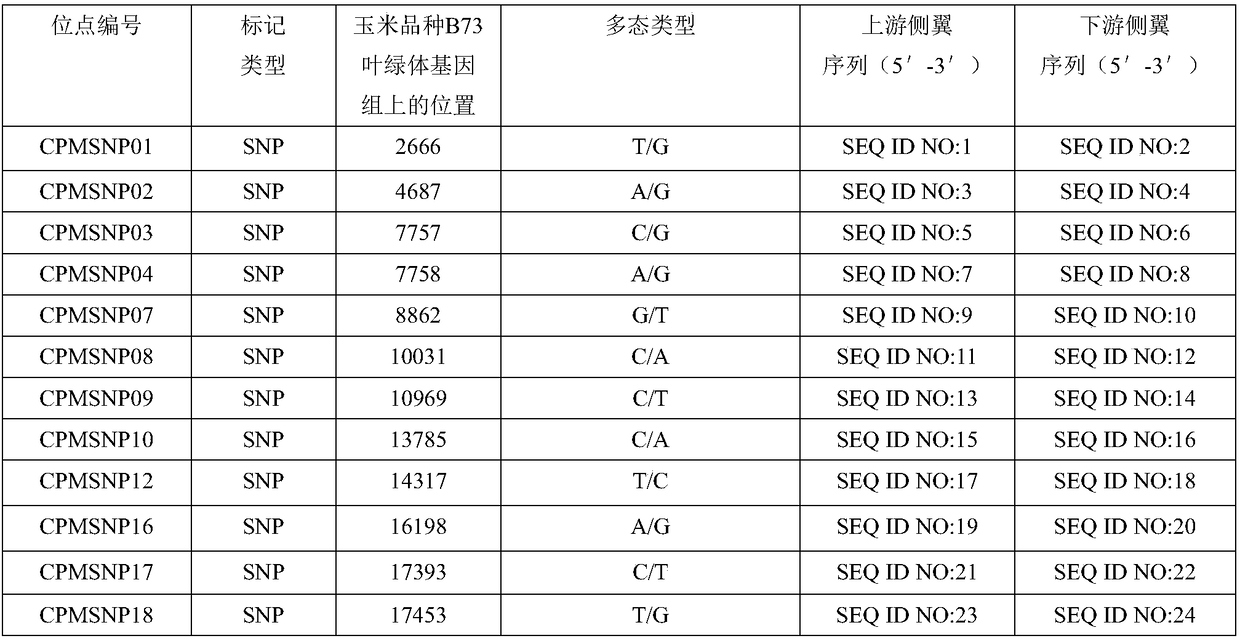Molecular markers of maize chloroplast genome and its application in cultivar identification
A chloroplast genome and molecular marker technology, applied in the field of crop molecular biology
- Summary
- Abstract
- Description
- Claims
- Application Information
AI Technical Summary
Problems solved by technology
Method used
Image
Examples
Embodiment 1
[0042] Example 1 Obtaining a set of polymorphic primers suitable for KASP sample high-throughput detection platform of maize chloroplast genome
[0043] 1. Sample selection: 170 widely representative maize inbred lines were selected for whole genome sequencing. These 170 samples include common corn, waxy corn, sweet corn, popcorn and other corn types; including all heterosis groups in my country, Tang Sipingtou, Lvda Honggu, Reid, Lanka, improved Reid, improved Lanka, Group P and landraces.
[0044] 2. Sample preparation: 170 corn samples were germinated in the incubator for 5 days, the first 3 days were under no light conditions, and the next 2 days were under light conditions (that is, sufficient light was given after unearthed). For each sample, leaves were selected from 30 green seedlings, mixed, and fully ground under liquid nitrogen conditions. Total DNA was extracted by CTAB method, and RNA was removed. The quality of the extracted DNA was detected by UV spectrophotom...
Embodiment 2
[0051] Example 2 Using the present invention to obtain 63 pairs of polymorphic primer combinations to construct a corn variety chloroplast DNA fingerprint database
[0052] DNA extraction of corn varieties: Each sample was seeded with seeds, given light, and formed green shoots. The method of DNA extraction was mixed plants, and the green leaves of 30 individual plants were mixed. The specific steps of DNA extraction were carried out in accordance with the molecular identification standard of maize DNA (Wang Fengge et al., 2014). Dilute the DNA to form a working solution with a concentration of 20ng / μL. The 63 pairs of primers in Table 1 of the present invention were used to construct chloroplast DNA fingerprints (based on SNP and InDel markers) based on the KASP platform.
[0053]PCR amplification: PCR reaction system: DNA template 1.5 μL, KASP ROX standard reaction mix (Kbiosciences, Herts UK) 0.5 μL, KASP Primer mix 0.014 μL, ddH 2 O 0.5 μL; the concentration of each prim...
Embodiment 3
[0055] Example 3 Maternal traceability analysis using maize chloroplast genome polymorphic sites
[0056] For maize hybrid A to be identified, DNA was extracted from the green leaves of the seedlings, PCR amplification was performed using 63 pairs of polymorphic primers provided in Table 3 of the present invention, and the fluorescent signal was scanned to obtain fingerprint data. Concrete method is with embodiment 1. Based on the comparison of the DNA fingerprint data of sample A (Jingke 968) with the chloroplast SNP and InDel marker fingerprint database of known maize inbred varieties, it was determined that the chloroplast fingerprint information of the sample to be tested was the same as that of the B inbred line (Jing 724), and the hybridization was speculated The female parent of species A (Jingke 968) is B (Jing 724).
PUM
 Login to View More
Login to View More Abstract
Description
Claims
Application Information
 Login to View More
Login to View More - R&D
- Intellectual Property
- Life Sciences
- Materials
- Tech Scout
- Unparalleled Data Quality
- Higher Quality Content
- 60% Fewer Hallucinations
Browse by: Latest US Patents, China's latest patents, Technical Efficacy Thesaurus, Application Domain, Technology Topic, Popular Technical Reports.
© 2025 PatSnap. All rights reserved.Legal|Privacy policy|Modern Slavery Act Transparency Statement|Sitemap|About US| Contact US: help@patsnap.com



